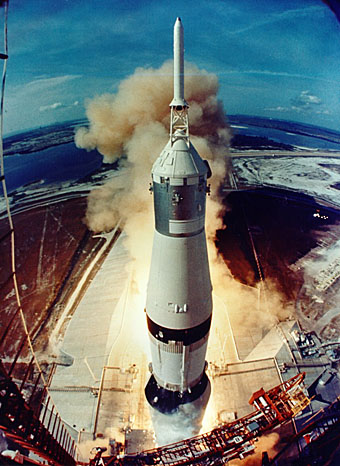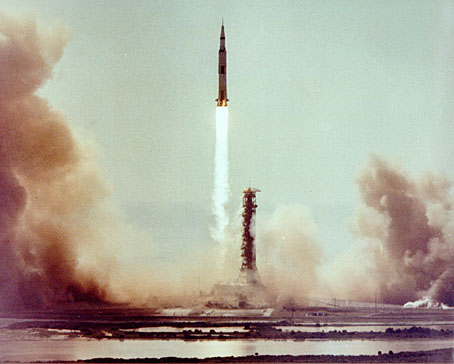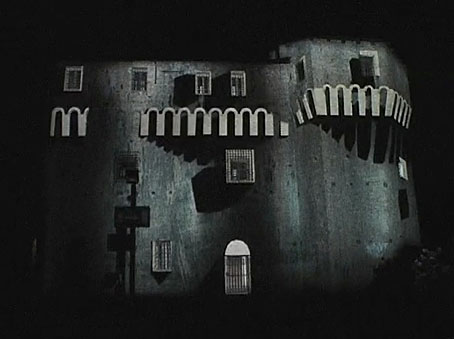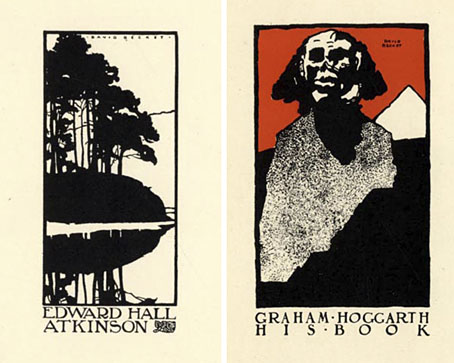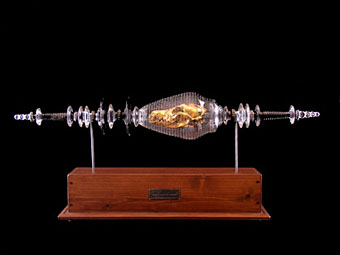Forty years ago I was seven years old and this sight, dear reader, was the most thrilling thing in the whole world. Even now, seeing again the classic fisheye moment of Apollo 11’s launch sparks a buried flare of childhood excitement, resurrecting a deep obsession with astronauts, Saturn V rockets, command modules and lunar landing craft. In 1969 all I could do was gape in awe at our tiny black-and-white TV screen as it showed men going to the Moon right this minute!
Now I’m the same age as the astronauts of the Apollo missions I look at these photographs and feel at different kind of awe, at the courage required to sit at the top of a metal tower as tall as St Paul’s Cathedral filled with highly-combustible rocket fuel. And that’s before you get to the liftoff itself with its punishing g-forces, followed by navigating a vacuum for several days in a tin can controlled by less computer power than you’d find now in the average mobile phone. None of this occurred to me when I was seven, all that mattered was the fact that men were going to the Moon right this minute!
I’ll return to those childhood obsessions later (no, you don’t escape that easily). Meanwhile the fortieth anniversary of the Apollo 11 mission is naturally generating a fair amount of web attention. NASA has a new site, We Choose the Moon, which augments their older archives. And New Scientist tells us Why the moon still matters. On the same site there’s also Brian Eno discussing the Moon missions and his 1983 soundtrack album, Apollo, which I’m listening to right this minute!
• Apollo 11 at the Big Picture
• Weaving the way to the Moon | The beatnik and the little old ladies
Previously on { feuilleton }
• Earthrise
• East of Paracelsus

